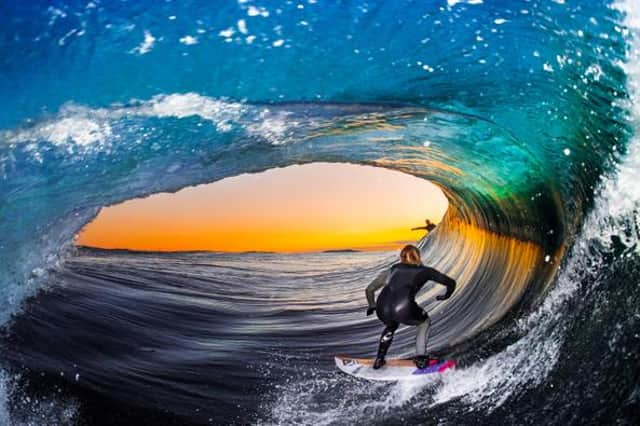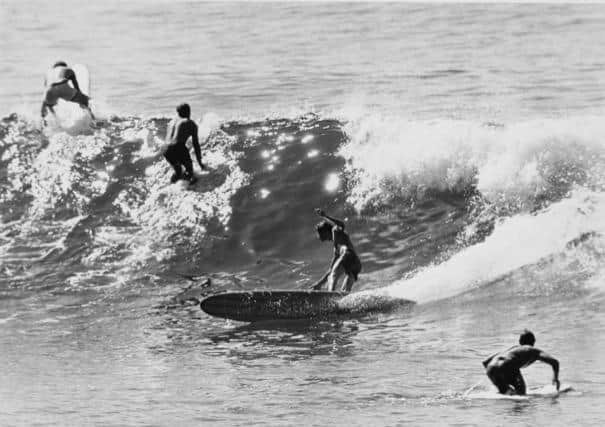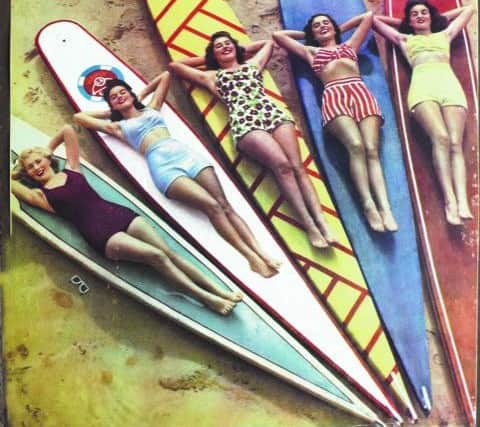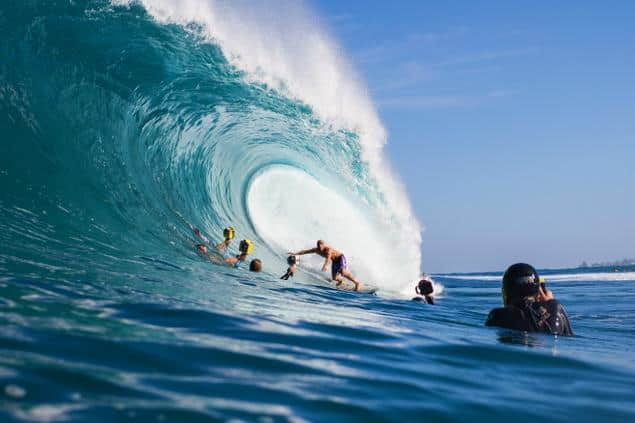Book review: Waterproof - Australian Surf Photography Since 1858, by John Ogden


Last week saw a major publishing event in the surfing world, as veteran Australian writer and photographer John Ogden released his new book Waterproof: Australian Surf Photography Since 1858. Due to ongoing coronavirus restrictions Down Under, the launch had to be a virtual one, but it was still attended by over 80 people from all around the world, notably two-time world champ Tom Carroll and Luke Kennedy, longtime editor of Tracks magazine.
As you’d expect, the book is a beautiful thing to look at but it is also a serious work of scholarship. Ogden devotes a good deal of space to the very early surf snappers, including those like Antoine Fauchery (b. 1823) and Richard Daintree (b. 1832) who, while not actually photographing surfers, still concerned themselves with "the surf zone", and there’s also some satisfyingly forensic work on the earliest images of people riding waves.
Advertisement
Hide AdAdvertisement
Hide AdAs far as anyone can tell, the first photograph of someone surfing in Australian waters was taken at Yamba, New South Wales in either 1911 or 1912 by a photographer called Osric Burston Notley, and shows sailor Tommy Walker riding a finless redwood board he bought for two dollars while in Hawaii. Walker is doing a headstand, so we can conclude he’d had a fair bit of practice by the time Notley captured his historic image.


Ironically though, compiling material from the last couple of decades proved just as difficult for Ogden as dealing with the distant past. Rapid advances in technology since the turn of the millennium have brought about a seismic shift in the way surf images are captured and consumed, and this caused him an almighty headache, namely: how on earth do you create an accurate history of Aussie surf photography when, for the last decade or two, the internet has been filling up with millions of images captured by thousands of surf-snappers, all equipped with the latest technology?
"With more players entering the field," Ogden writes, "we are seeing many sensational images, but also a vast mass of dross as cameras blaze away in machine-gun bursts to be edited later. We are now bombarded with so many images that it is becoming increasingly difficult to stand out from the crowd... Online platforms proliferate, and in this market everyone is expected to give their work away. Rapid scrolling through images, and less archiving, has meant fewer ’iconic’ photographs."
Ogden first got into surfing in the 1960s and started working as West Australia correspondent for the Aussie surf mag Tracks during the late 1970s, so for much of his professional life surf photography has been the preserve of a small, elite band of specialist lensmen (and yes, they were almost always men.) Up until the early Noughties, relatively few people had the combination of skills, experience and equipment necessary to take meaningful pictures of surfers riding waves – certainly the kind of images that could be sold to surf mags for cold, hard cash.
All of which means that selecting the great Aussie surf photographers of the last few decades of the 20th century isn’t rocket science: most surfers will be familiar with the work of John Witzig, Albe Falzon, Peter "Joli" Wilson and Ted Grambeau. Surf anoraks might argue over which images Ogden has chosen to represent these well-kent names, or whether certain photographers deserve to be higher or lower in the mix, but this is just squabbling over details.


Things start to get more interesting, though, the closer Ogden gets to the present day. How, from the myriad "sensational images" scattered across cyberspace, is he going to decide which photographers to feature?
Ogden’s instinct seems to be to look for a distinctive style or approach, and this makes for an absorbing conclusion to the book. Trent Mitchell’s ethereal underwater shots of bodysurfers, their faces and bodies almost seeming to merge with their aquatic surroundings, are instantly recognisable; similarly, Ming Nomchong’s supremely detailed analogue close-ups make you stop and examine every last ripple. Meanwhile, Leroy Bellet’s high-risk approach of surfing behind another surfer, camera in hand, in waves of consequence produces the kind of images that could only be replicated by the handful of snappers worldwide who are both solid surfers and also prepared to leave a certain amount of skin stuck to shallow reefs in order to get results.
Finally, Ogden focuses on some of the contemporary photographers who are interested in the forms of breaking waves themselves, rather than any humans who may be interacting with them. The operatic whitewater explosions captured by Luke Shadbolt and Ray Collins would have made sense to some of Australia’s earliest surf shutterbugs. As Shakespeare put it: the wheel has come full circle, and we’re bloody back here again mate.
Advertisement
Hide AdAdvertisement
Hide AdWaterproof: Australian Surf Photography Since 1858, by John Ogden, Cyclops Productions, www.cyclopsproductions.com.au


A message from the Editor
Thank you for reading this article. We're more reliant on your support than ever as the shift in consumer habits brought about by coronavirus impacts our advertisers.
If you haven't already, please consider supporting our trusted, fact-checked journalism by taking out a digital subscription at https://www.scotsman.com/subscriptions